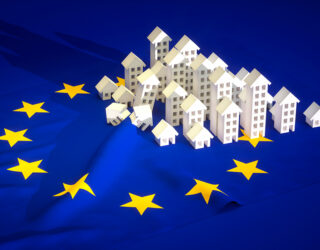This mechanism, already in force since 1 October 2023, provides for a more flexible transitional regime until 31 December 2025.
The Carbon Border Adjustment Mechanism (CBAM) was approved by EU Regulation 2023/956 of 10 May 2023, with the aim of contributing to the reduction of greenhouse gas emissions and, in particular, to combat the risk of carbon leakage (i.e. against the transfer of production to other countries to avoid the application of the Union’s climate policies European Union (EU), or its replacement by the import of goods from territories where environmental regulation is less demanding).
To this end, this mechanism obliges importers of certain goods to calculate the gas emissions implicit in their production and to exchange them for CBAM certificates (whose acquisition price will be referenced to the auctions of the marketed emission allowances). In addition, in order to promote decarbonization in third countries outside the EU, it is envisaged that, in the calculation of the number of CBAM certificates to be exchanged, the amounts paid in a third country for a similar concept can be taken into account.
In its current configuration, it is envisaged that this mechanism will limit its application to the following sectors: cement, iron, steel, aluminum, fertilizers, hydrogen and electricity. However, it is not ruled out that this scope will be reviewed and modified based on the information obtained during the transitional period, which will last until 31 December 2025.
The experience gained so far during the transition period allows to conclude that the new obligations may involve a great deal of complexity for some of the importers initially affected. For this reason, the Commission has put forward a proposal within the Omnibus package (currently in the legislative process), which sets a minimum materiality threshold of 50 tons mass of CBAM products imported annually (below which operators will have no obligations associated with CBAM). According to the Commission’s current data, this threshold would allow 99% of the emissions of all imported goods to remain within the scope of the CBAM, while exempting 90% of importers from the obligation.
Considering, as we have mentioned, the complexity of this adjustment mechanism, it is advisable that importing companies operating in the aforementioned sectors begin to work on the implementation of the necessary procedures that allow them to meet the following obligations:
- Registration in a register to obtain the status of authorized declarant (essential from 1 January 2026 to import goods within the scope of the CBAM).
- Communication with the foreign supplier so that it is not only registered in the corresponding register, but also so that it provides the necessary information to calculate, for each imported good, what the implicit emissions are.
- Acquisition of the necessary CBAM certificates corresponding to the implicit emissions of the imports made. It is important to note that, although the certificates will be delivered with the limit of the month of May of the year following the year in which the imports were made, it is mandatory to maintain a sufficient volume of certificates during the year (80% of the issues implicit in the imports made in the year). Similarly, in the event of an excess of certificates after their delivery, it is envisaged that they may be repurchased by the Member State concerned, provided that the excess does not exceed one third of the total number of certificates acquired during the previous year.
- Request for reports from accredited verifiers certifying the declared implicit emissions.
Failure to comply with the above obligations may lead not only to the imposition of sanctions, but also to disqualification from carrying out this type of import.
Finally, it is advisable to provide mechanisms that allow the volume of imports to be carried out to be properly estimated, to avoid an excess stock of certificates whose recovery may be problematic.






